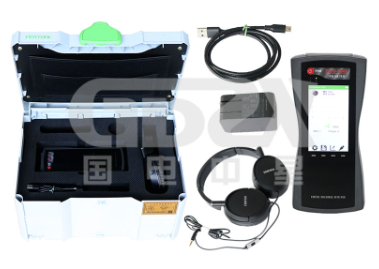NEWSnews
Analysis Method for Partial Discharge Detection Test Results Of High-Voltage Switchgear
The interference elimination during partial discharge detection mainly involves eliminating interference signals based on the principle of electromagnetic radiation. During on-site testing, the following methods are often used to eliminate interference in the test:
Stagger time or turn off interference sources
For some interference sources (such as mobile communication signals, broadcast signals, rail transit, etc.), selecting a smaller signal for partial discharge detection can effectively avoid the interference signal; If there are interference sources that can be turned off during the detection process (such as various rotating motors, electronic fences, lighting, SF6 leak detection devices, air conditioning, etc.), the interference sources can be turned off to avoid affecting the detection results.
Choose the appropriate filter
For interference signals with fixed frequencies, appropriate filters can be installed to filter out the interference signal, in order to avoid affecting the partial discharge detection results.

Analyze the power frequency correlation of detection signals
Analyzing the power frequency correlation of the detection signal can effectively determine whether the signal is related to the power frequency signal. If it is related, the signal is emitted in the power frequency environment, which is likely to be a partial discharge signal, but it may also come from interference in the power system, such as lights, air conditioning, meter cabinets, and secondary circuits. However, if there is no power frequency correlation, most of it comes from interference signals.
Positioning method for eliminating interference signals
When pulse signals are detected, the power frequency correlation of the signal can be preliminarily determined, but further positioning analysis of the signal source is needed. The time difference method can be used to roughly locate and analyze the signal, in order to confirm whether the signal comes from internal partial discharge signals or external interference signals of the equipment.
Analysis method for partial discharge test results:
Trend analysis method is used to analyze the detection results of the same switchgear at different times, and to conduct longitudinal comparison to determine the operating trend of the switchgear. Detect the switchgear in the switchgear room according to specific cycles, retain each test result, and then analyze the trend of partial discharge status changes of the equipment based on the test results;
Horizontal analysis method, which compares the detection results of switchgear in the same switchgear room horizontally. If the detection result of one switchgear is greater than the background value on site and the test results of other switchgear, it can be determined that the equipment may have defects;
Threshold comparison refers to providing a judgment threshold, comparing it with the detection results of the switchgear, and analyzing the results to determine the operating status of the switchgear.
Guodian Zhongxing is a professional manufacturer of secondary protection testing equipment, with a wide variety of instrument and equipment types to choose from. GDZX serves you at 4000-828-027. To learn more, visit GDZX's official website at www.gdzxdl.com.





















